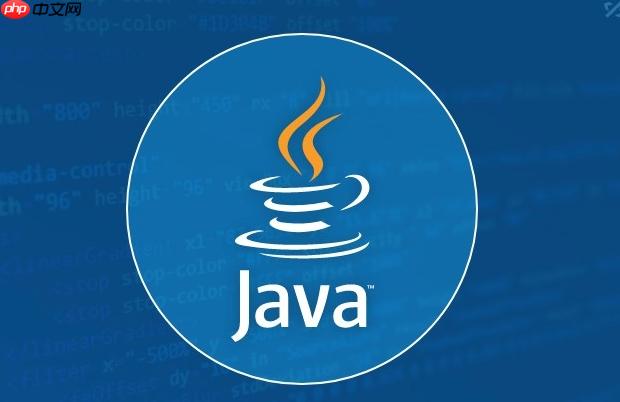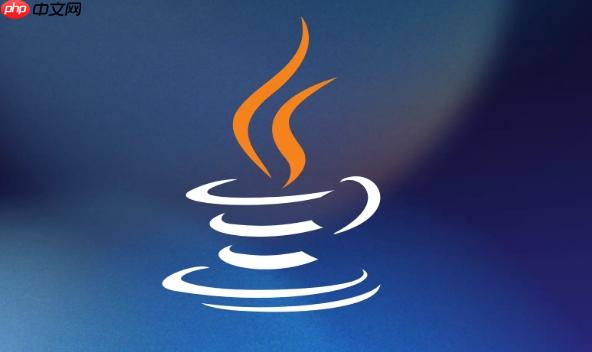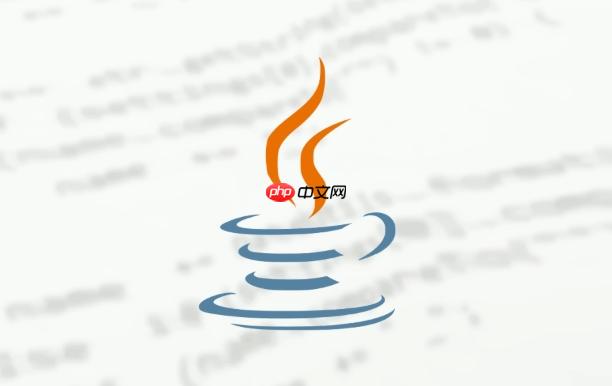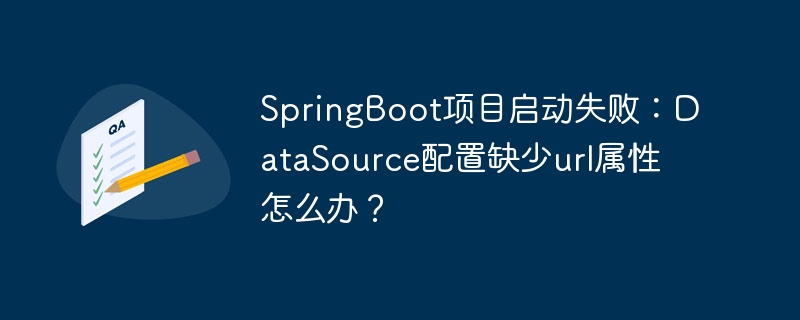runtime.exec()方法執行外部命令時需注意阻塞、安全和退出碼處理問題。1. 阻塞問題通過異步讀取輸入流和錯誤流解決,使用多線程確保緩沖區及時清空;2. 安全風險主要為命令注入,應使用processbuilder類分離命令與參數來防范;3. 退出碼通過process.waitfor()獲取,用于判斷命令執行是否成功;4. 超時控制可通過future和executorservice實現,超時后調用process.destroy()終止進程。

Java中Runtime.exec() 方法本質上是在Java程序里調用操作系統的命令。它有點像在命令行窗口里敲命令,但直接使用時坑不少。用得不好,程序就可能卡住,甚至崩潰。所以,理解它的用法和注意事項至關重要。

解決方案
Runtime.exec() 允許Java程序執行外部命令。基本用法很簡單:

Process process = Runtime.getRuntime().exec("ls -l"); // Unix/linux // 或者 Process process = Runtime.getRuntime().exec("cmd /c dir"); // windows
這行代碼會啟動一個新的進程來執行 “ls -l” (Linux) 或 “cmd /c dir” (Windows) 命令。 Process 對象允許你控制和監視這個新進程。
立即學習“Java免費學習筆記(深入)”;
但是,問題來了。 Runtime.exec() 默認情況下不會為你處理進程的輸入、輸出和錯誤流。這意味著:

- 輸入流: 如果你需要向執行的命令傳遞輸入,你需要獲取 process.getOutputStream() 并寫入數據。
- 輸出流: 命令執行的結果會寫入 process.getInputStream()。 如果你不讀取這個流,緩沖區可能會填滿,導致進程阻塞。
- 錯誤流: 命令執行的錯誤信息會寫入 process.getErrorStream()。 同樣,不讀取這個流也可能導致阻塞。
所以,一個更完整的用法是:
import java.io.*; public class ExecExample { public static void main(String[] args) throws IOException, InterruptedException { String command = "ls -l"; // 或者 "cmd /c dir" Process process = Runtime.getRuntime().exec(command); // 讀取輸出流 BufferedReader reader = new BufferedReader(new InputStreamReader(process.getInputStream())); String line; while ((line = reader.readLine()) != null) { System.out.println(line); } // 讀取錯誤流 BufferedReader errorReader = new BufferedReader(new InputStreamReader(process.getErrorStream())); String errorLine; while ((errorLine = errorReader.readLine()) != null) { System.err.println(errorLine); } // 等待進程結束 int exitCode = process.waitFor(); System.out.println("Exited with code : " + exitCode); } }
這個例子展示了如何讀取輸出流和錯誤流,以及如何等待進程結束。 process.waitFor() 非常重要,它能確保你的程序在外部命令執行完畢后繼續執行。
如何避免Runtime.exec()的阻塞問題?
阻塞問題是使用 Runtime.exec() 時最常見的陷阱。 根本原因在于,操作系統為子進程的標準輸出和標準錯誤輸出分配的緩沖區大小有限。 如果子進程產生的數據量超過了這個緩沖區大小,并且你的 Java 程序沒有及時讀取這些數據,子進程就會被阻塞,等待緩沖區被清空。
解決這個問題的關鍵是異步讀取子進程的標準輸出和標準錯誤輸出。 你可以使用多線程來實現這一點:
import java.io.*; import java.util.concurrent.*; public class AsyncExecExample { public static void main(String[] args) throws IOException, InterruptedException, ExecutionException { String command = "ls -l"; // 或者 "cmd /c dir" Process process = Runtime.getRuntime().exec(command); ExecutorService executor = Executors.newFixedThreadPool(2); // 異步讀取輸出流 Future<String> outputFuture = executor.submit(() -> { StringBuilder output = new StringBuilder(); try (BufferedReader reader = new BufferedReader(new InputStreamReader(process.getInputStream()))) { String line; while ((line = reader.readLine()) != null) { output.append(line).append("n"); } } catch (IOException e) { e.printStackTrace(); } return output.toString(); }); // 異步讀取錯誤流 Future<String> errorFuture = executor.submit(() -> { StringBuilder error = new StringBuilder(); try (BufferedReader reader = new BufferedReader(new InputStreamReader(process.getErrorStream()))) { String line; while ((line = reader.readLine()) != null) { error.append(line).append("n"); } } catch (IOException e) { e.printStackTrace(); } return error.toString(); }); int exitCode = process.waitFor(); System.out.println("Exited with code : " + exitCode); // 獲取異步讀取的結果 String output = outputFuture.get(); String error = errorFuture.get(); System.out.println("Output:n" + output); System.err.println("Error:n" + error); executor.shutdown(); } }
在這個例子中,我們使用了 ExecutorService 來創建兩個線程,分別負責讀取標準輸出和標準錯誤輸出。 這樣,即使子進程產生大量數據,也不會阻塞主線程。
Runtime.exec()有哪些安全風險,如何防范?
Runtime.exec() 最大的安全風險在于命令注入。 如果你將用戶輸入直接拼接到要執行的命令中,攻擊者就可以通過構造惡意的輸入來執行任意命令。
例如,假設你的程序需要執行一個命令來處理用戶上傳的文件:
String filename = userInput; // 用戶輸入的文件名 String command = "process_file " + filename; Runtime.getRuntime().exec(command); // 存在命令注入風險
如果用戶輸入 “; rm -rf /”,那么實際執行的命令就會變成 “process_file ; rm -rf /”,這將導致你的系統被惡意刪除。
為了避免命令注入,絕對不要直接拼接用戶輸入到命令字符串中。 而是應該使用 ProcessBuilder 類,它可以將命令和參數分開傳遞:
String filename = userInput; ProcessBuilder builder = new ProcessBuilder("process_file", filename); Process process = builder.start(); // 安全
ProcessBuilder 會正確地轉義參數,防止命令注入。 它也更靈活,可以設置工作目錄、環境變量等。
如何處理Runtime.exec()執行的命令的退出碼?
Runtime.exec() 返回的 Process 對象提供了 waitFor() 方法來等待進程結束,并返回進程的退出碼。 退出碼是操作系統用來表示進程執行結果的整數。 通常,0 表示成功,非 0 值表示失敗。
你可以使用 process.exitValue() 方法來獲取進程的退出碼,但必須在調用 waitFor() 之后才能調用 exitValue()。 如果在進程結束之前調用 exitValue(),會拋出 IllegalThreadStateException 異常。
Process process = Runtime.getRuntime().exec("ls -l"); int exitCode = process.waitFor(); System.out.println("Exit code: " + exitCode); if (exitCode != 0) { System.err.println("Command failed!"); }
通過檢查退出碼,你可以判斷命令是否成功執行,并采取相應的處理措施。 不同的命令和操作系統可能會使用不同的退出碼來表示不同的錯誤類型。
如何設置Runtime.exec()執行命令的超時時間?
有時候,你希望限制 Runtime.exec() 執行的命令的運行時間,以防止命令無限期地運行。 Process 類本身沒有提供直接設置超時時間的方法,但你可以使用 Future 和 ExecutorService 來實現:
import java.io.IOException; import java.util.concurrent.*; public class TimeoutExecExample { public static void main(String[] args) throws IOException, InterruptedException, ExecutionException, TimeoutException { String command = "sleep 5"; // 一個會運行5秒的命令 Process process = Runtime.getRuntime().exec(command); ExecutorService executor = Executors.newSingleThreadExecutor(); Future<Integer> future = executor.submit(() -> { try { return process.waitFor(); } catch (InterruptedException e) { return -1; // 或者其他表示中斷的值 } }); try { int exitCode = future.get(2, TimeUnit.SECONDS); // 設置超時時間為2秒 System.out.println("Exit code: " + exitCode); } catch (TimeoutException e) { System.err.println("Command timed out!"); process.destroy(); // 強制結束進程 } finally { executor.shutdownNow(); } } }
在這個例子中,我們使用 ExecutorService 來異步地等待進程結束。 future.get(2, TimeUnit.SECONDS) 會等待最多 2 秒鐘。 如果超過 2 秒鐘進程還沒有結束,就會拋出 TimeoutException 異常。 在 catch 塊中,我們調用 process.destroy() 來強制結束進程。 finally 塊中調用 executor.shutdownNow() 來停止 ExecutorService。



















